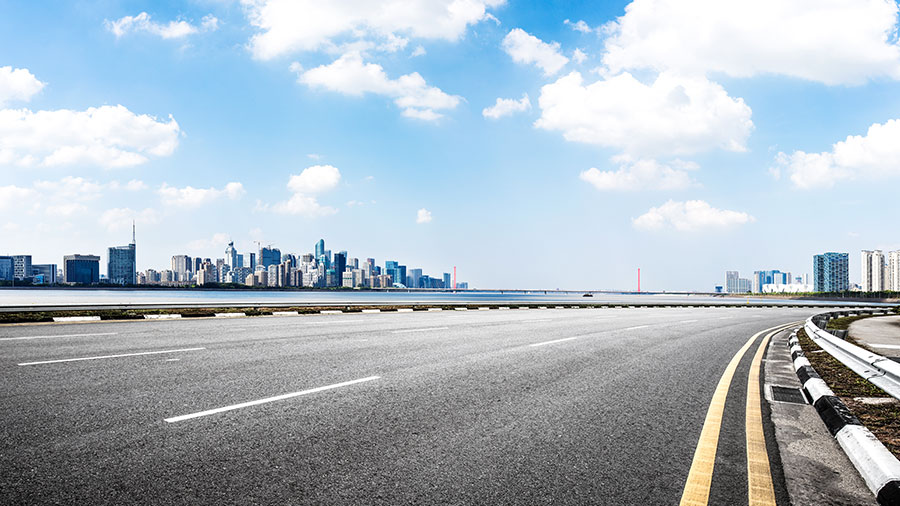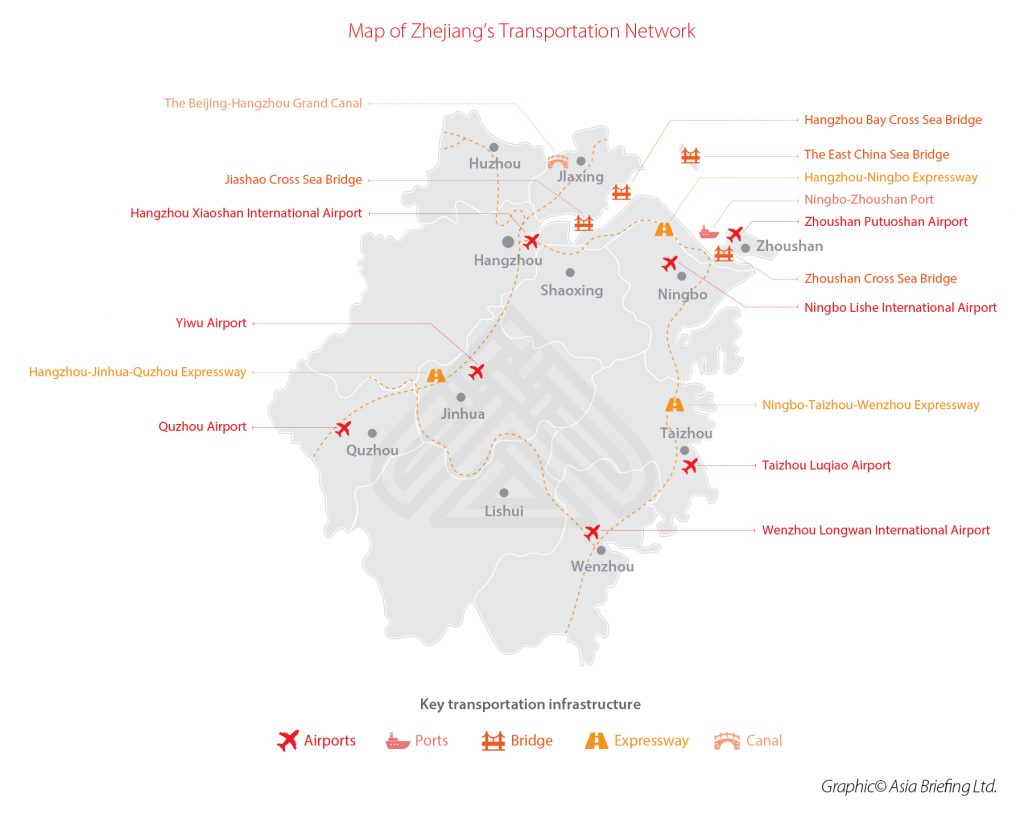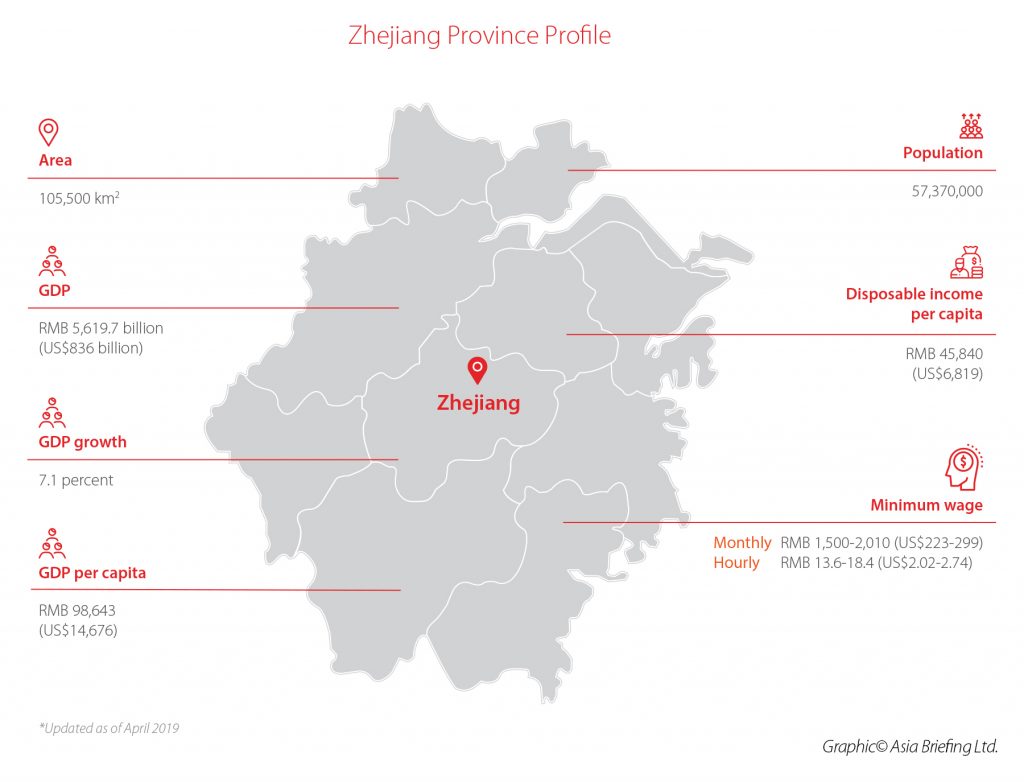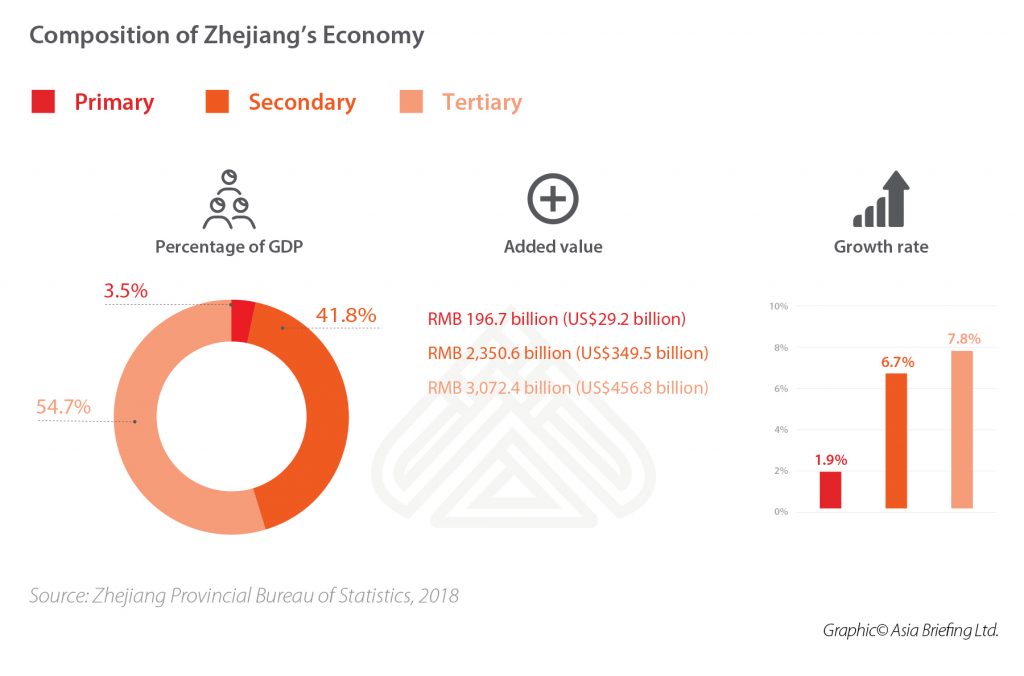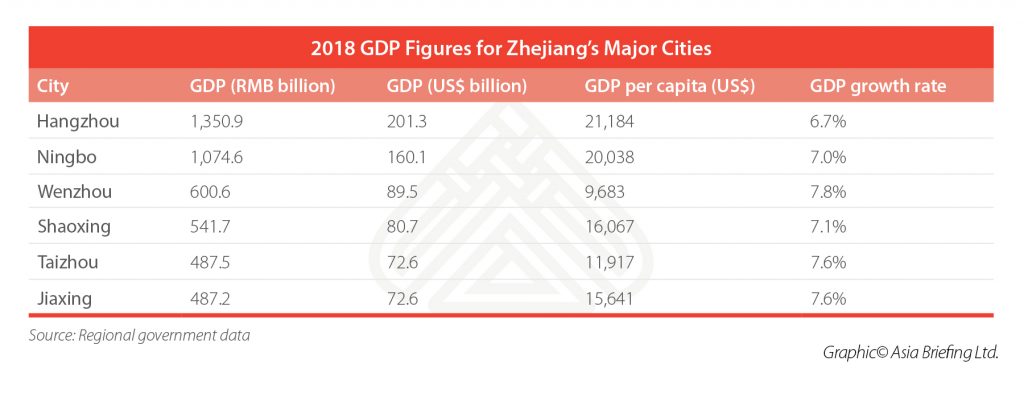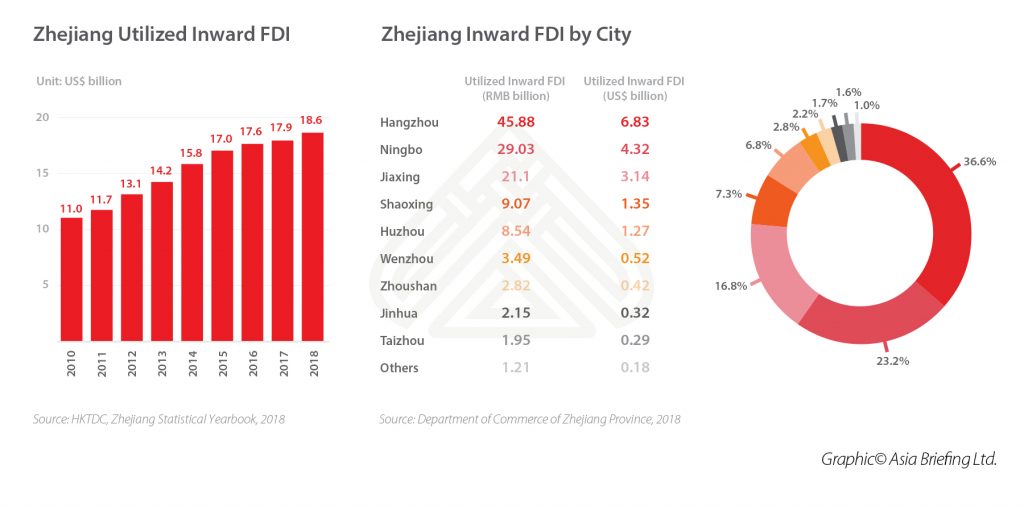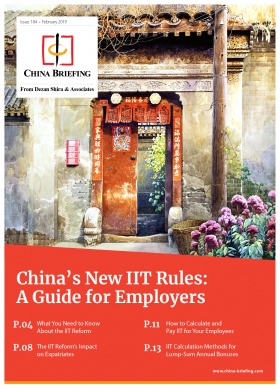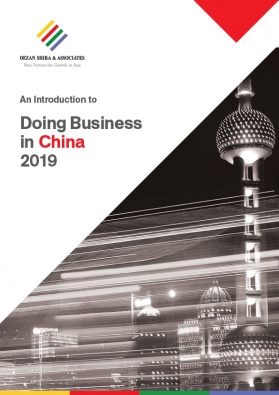Investing in Zhejiang Province: A Quick Guide for Foreign Investors
Since hosting the 2016 G20 summit, Zhejiang province has been thrust into the global spotlight.
The province of 55 million people is advantageously located on China’s east coast, south of Shanghai. It is easily accessible via the Hangzhou Bay Bridge, the world’s fourth longest transoceanic bridge.
Zhejiang boasts of advanced infrastructure, with 2,600 kilometers of railway, almost 120,000 kilometers of highways, and one of the top five busiest ports in the world. These factors, along with a rapidly developing business environment, have led Zhejiang to become one of the strongest and most diverse provincial economies in China.
A growing number of foreign firms are choosing Zhejiang as the location for their Chinese investments. The province offers great opportunities to potential China entrants, including a range of economic development zones. To take advantage of these opportunities, the economy of Zhejiang and recent foreign direct investment (FDI) trends must be understood.
Zhejiang’s economy
In 2018, Zhejiang’s provincial gross domestic product (GDP) reached RMB 5.6 trillion (US$836 billion), the fourth highest in China, growing 7.1 percent on the previous year – 0.5 percentage points higher than the national average.
More than half of this GDP comes from the services sector, with a further 41.8 percent contributed by secondary industries, including manufacturing. Agriculture and related industries make up the final 3.5 percent.
Zhejiang’s GDP per capita was RMB 98,643 (US$14,676) in 2018, almost triple what it was 10 years previously. Its urban households had an average disposable income of RMB 55,574 (US$8,242) compared with RMB 27,302 (US$4,049) for their rural counterparts.
Zhejiang has a very strong private economy. The private sector contributes to 56 percent of the province’s tax revenue, 77 percent of exports, 65 percent of the provincial GDP, and 80 percent of the jobs created.
What’s more, Zhejiang boasts strong performance in commodity circulation and is one of the fastest growing e-commerce markets. It has over 4,400 differently commodity trading markets. The transaction volume of these 4,400 markets and the number of the markets which have yearly trading volume exceeding RMB 100 million (US$15 million) have ranked the first in China for 24 successive years.
Zhejiang’s economy is also relatively open, having established direct economic cooperation and trade relations with more than 200 regions around the world, according to the local department of commerce.
By the end of 2018, 182 of the top 500 global enterprises had invested in Zhejiang. By 2017, Zhejiang had welcomed 61,080 foreign-invested enterprises with a total investment including foreign investors’ registered capital and loans of US$622.8 billion and the actual utilization of foreign capital of US$194.1 billion.
The GDP figures for the major cities in Zhejiang can be seen in the table below.
Hangzhou, the largest city and provincial capital, is home to a number of major e-commerce players in the Chinese market (for example, Alibaba and Net Ease) and is challenging Shenzhen and Beijing for the title of ‘China’s Silicon Valley’.
The city of Ningbo is home to the world’s busiest port by throughput tonnage; over one billion tons of goods passed through the Ningbo-Zhoushan port in 2018. The city of Jiaxing functions as a transportation hub between Shanghai, Suzhou, and Hangzhou, which is why it is on the radar of many foreign companies. Interestingly, Lego, the world’s leading toy production company, established one factory in the city at the end of 2016. It produces an estimated 70 to 80 percent of all Lego products sold in Asia.
FDI in Zhejiang
Utilized inward FDI in Zhejiang has almost doubled over the last decade, reaching US$18.6 billion in 2018 to rank fifth in the country. Hangzhou was the largest recipient of FDI with 36.6 percent of the total, followed by Ningbo (23.2 percent), and Jiaxing (16.8 percent).
In terms of origin country, in 2017, 68 percent of the FDI came from Hong Kong. Setting up a holding company in Hong Kong with representative offices in China is a popular method of entering the Chinese market, which explain this actuality. British Virgin Islands (3 percent), Japan (2.7 percent), Singapore (2.2 percent), and Germany (1.9 percent) also contribute significant proportions of the FDI and make up the top five.
Industry-wise, the service industries accounted for over US$12 billion (64.4 percent) of the FDI into Zhejiang in 2018. Specifically, wholesale and retail, real estate, financial services, and research and development are the main investment areas.
The other 35.5 percent (US$6.6 billion) of the investment by foreign firms was in secondary industries, primarily in manufacturing operations, which received US$5.97 billion of foreign capital. Major industries targeted include electronic and communication equipment manufacturing, integrated circuit manufacturing, and medical device manufacturing.
Since the beginning of the decade, there has been a marked shift in the destination of foreign investment into Zhejiang. 2010 saw a majority of FDI going into manufacturing operations. In contrast, service industries received the bulk of foreign investment in 2018.
Local governments, at the city and provincial level, have begun to be more selective over the investments that they attract. An attempt to control pollution through stricter regulations, steeper taxes, and fines has contributed to the shift away from manufacturing and towards service industries.
Additionally, the labor intensive nature of manufacturing and rising wages on China’s east coast have forced potential investors to look elsewhere when setting up factories.
Development zones
According to statistics from the Department of Commerce for Zhejiang, Zhejiang’s major development zones attracted about US$8.8 billion of FDI in 2018, more than 42 percent of the province’s total FDI received.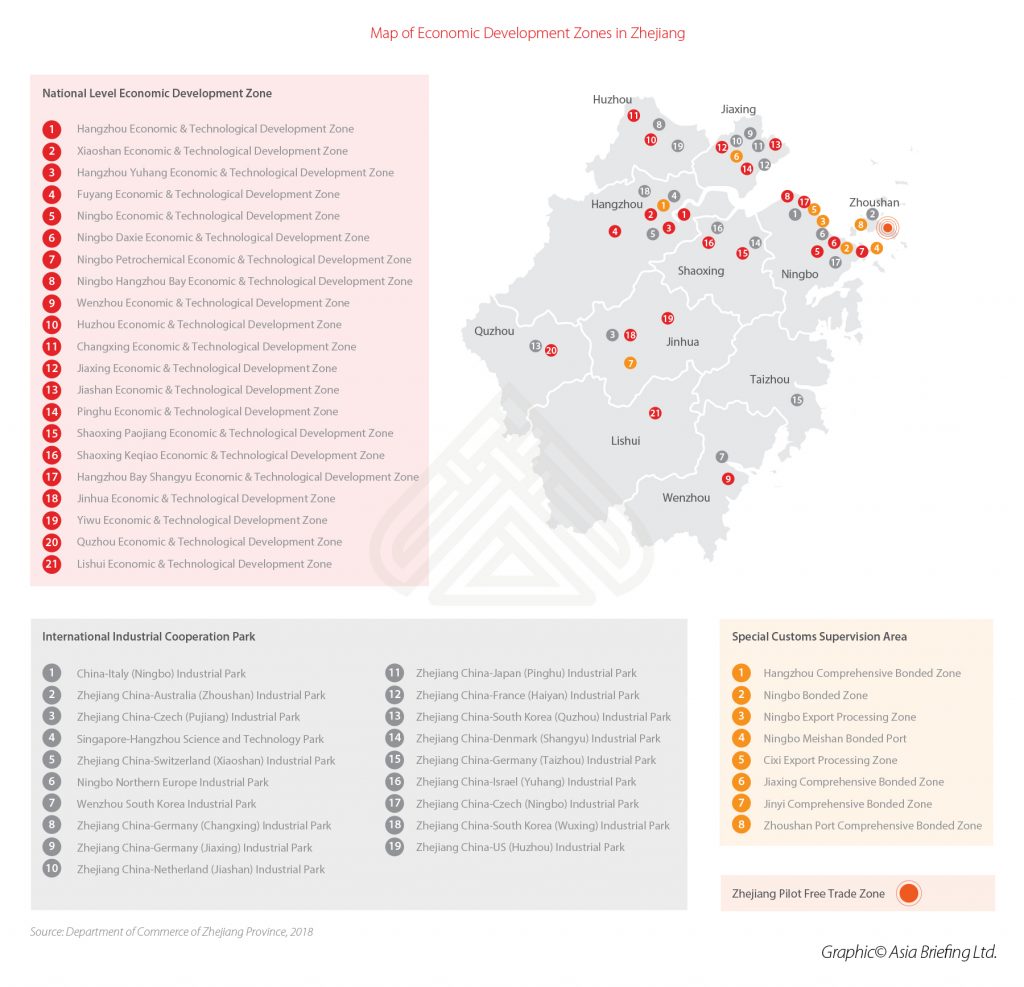
There are different types of development zones in Zhejiang, including free trade zones, bonded zones, and technical development zones.
Free trade zones
Officially launched in Zhoushan island on April 1, 2017, the Zhejiang Pilot Free Trade Zone (FTZ) is China’s only free trade zone that consists of both land and sea anchorage.
The FTZ has unique geographical advantages and rich port shoreline resources. It focuses on business, like bulk commodity transshipment, processing trade, bonded fuel oil supply, equipment manufacturing, aviation manufacturing, international maritime services, international trade, and bonded processing.
Until February 2019, Zhejiang FTZ was home to 12,501 enterprises. The cumulative contractual utilization of foreign capital was US$5.05 billion, and the actual utilization of foreign capital was US$410 million.
The zone is an ideal location for trading companies. Preferential policies include exemption from licenses, import/export quotas, and VAT on imported goods.
Economic and technical development zones
There are 21 national-level and 54 provincial-level development zones in Zhejiang. These development zones received a total of US$8.03 billion in FDI in 2018, contributing to more than 40 percent of the province’s FDI.
The largest such zone is the Ningbo Economic and Technological Zone, which attracted US$0.98 billion of investment in 2018. This zone is home to multinationals such as ExxonMobil, Samsung, and AXA. Other prominent zones include Xiaoshan Economic Development Zone (US$0.45 billion), Jiashan Economic Development Zone (US$0.42 billion), Pinghu Economic Development Zone (US$0.41 billion), and Ningbo Hangzhou Bay Development Area (US$0.4 billion).
A number of these zones have industry specific incentives to attract similar firms and create a cluster of agglomeration and knowledge sharing, which has been proven to lead to the faster development of industries.
International Industrial Cooperation Park
Zhejiang’s international industrial cooperation parks are usually built in various economic development zones, seeking key developed countries and countries along the “Belt and Road” as their cooperative partners.
According to the local department of commerce, by the end of 2018, 19 international industrial cooperation parks in Zhejiang province successfully introduced more than 880 national cooperative projects with a total investment of more than US$9.08 billion. The prioritized industrial projects relate to information, environmental protection, health, tourism, fashion, finance, and high-end equipment manufacturing.
Other special customs supervision areas
Zhejiang has eight special customs supervision areas. Besides the Zhejiang FTZ, there are four comprehensive bonded zones, two export processing zones, and one bonded port.
These zones implement the tax and foreign exchange preferential policies of bonded areas, which include exemption from Custom Duty and VAT on raw materials, parts, office equipment, and other self-use equipment, as well as a VAT refund on any goods exported from the zone.
International transshipment, distribution, procurement, entrepot trade, export processing, and other businesses can develop here.
In addition, two big comprehensive bonded zones – the Hangzhou Comprehensive Bonded Zone and Zhoushan Port Comprehensive Bonded Zone – have been included into the pilot program for enterprises to qualify as general taxpayers of value-added tax for in-zone enterprises to explore the domestic market.
Opportunities for foreign firms
The logistics strength, location, and presence of economic development zones, free trade zones, and export processing zones makes Zhejiang an ideal location for foreign companies.
Both international and domestic transport links are strong here. In addition, Zhejiang has nine airports, three of which are international airports, as well as an international rail freight system. The first freight train from China to the UK arrived in London from Yiwu, Zhejiang in 2017 – making it easy to transport goods and materials to and from Zhejiang.
In its 2019 provincial level meeting, the government set the goal to maintain steady growth of actual foreign investment in Zhejiang. Measures include easing market access by implementing the negative list for foreign investment and improving the investment environment by protecting FIEs’ intellectual property rights.
The foreign investment access standards may be lowered for some prioritized industries, such as those catering to the digital economy, biomedicine, and high-end manufacturing. Potential entrants in these markets should stay up to date with any subsidies and preferential policies introduced that may be relevant to them.
This article was updated on June 5, 2019 to reflect the latest developments.
About Us
China Briefing is produced by Dezan Shira & Associates. The firm assists foreign investors throughout Asia from offices across the world, including in Dalian, Beijing, Shanghai, Guangzhou, Shenzhen, and Hong Kong. Readers may write to china@dezshira.com for more support on doing business in China.
- Previous Article Can China Develop its Own Digital Infrastructure Without US Assistance?
- Next Article China’s ‘Fapiao’ Invoice System Explained
